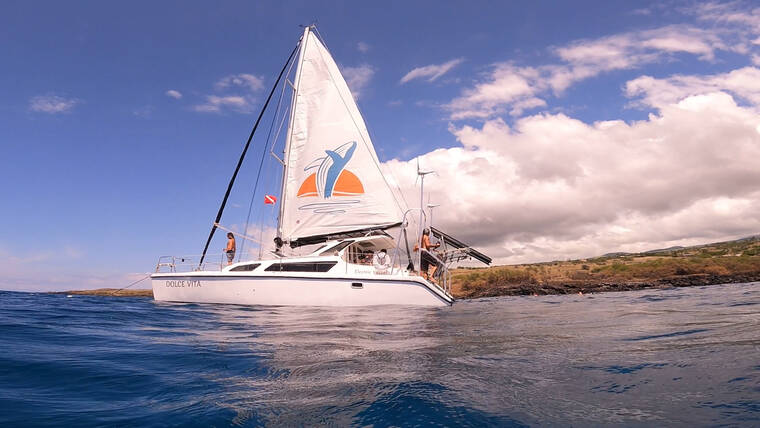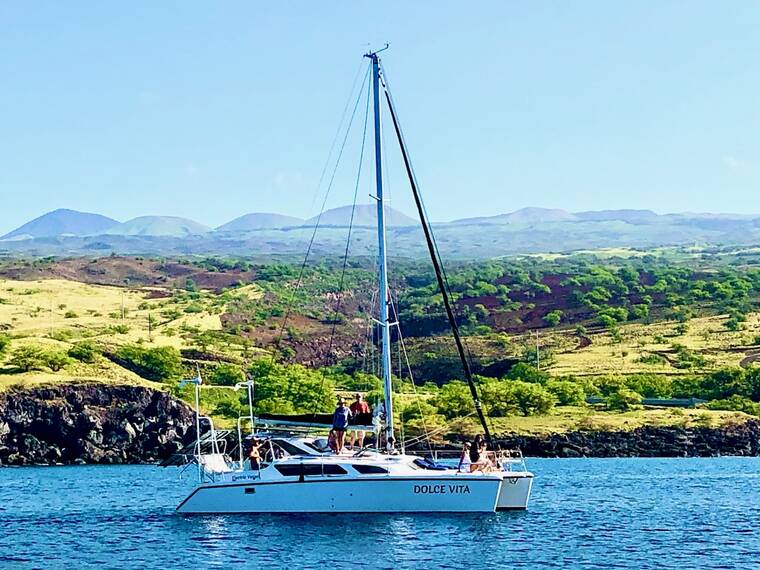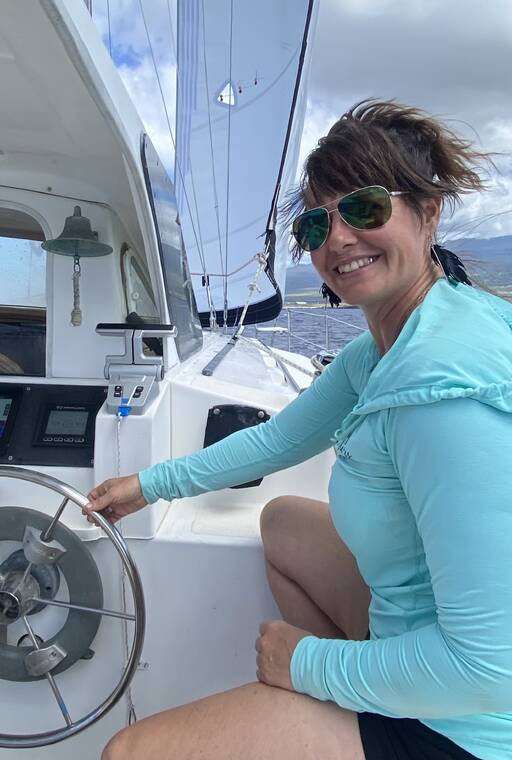West Hawaii business launches fully electric catamaran
A sea tour operator in Kawaihae is leading the way toward a more eco-friendly industry with Hawaii’s first fully electric sailing charter vessel.
The Dolce Vita, a 34-foot sailing catamaran operated by West Hawaii sailing charter business Kohala Blue, broke down last year. With the diesel engine for the business’ only boat damaged, Kohala Blue owner Shaun Barnes was in a tough position.
“They just don’t make replacement parts for that model anymore, so it would have been really expensive to repair,” Barnes said. “Another alternative would be to just get a new outboard motor, which is what a lot of people do.
“But we just liked the idea of going electric,” Barnes went on.
With the help of a team of electricians over the course of nine months, Barnes stripped the catamaran of its old engine and gas tanks, replacing them with two electric pod motors and four batteries, and installed four solar panels and a pair of wind turbines.
After “a lot of trial and error,” Barnes said she was finally left with a 100% renewable electric vessel.
Barnes said she believes the Dolce Vita is the only fully electric charter boat in the state, although the Department of Land and Natural Resources’ Division of Boating and Ocean Recreation was unable to confirm that claim.
Because of the difficulty and expense of the project, Barnes said she understands why other operators haven’t done the same, adding that the split hull of the catamaran offers more space for placing solar panels that other vessels might not have.
However, Barnes said there are clear benefits to switching to electric.
“The best part of it is the peace and quiet,” Barnes said. “When we’re moving, people can’t even tell whether we’re under motor or under sail. We have a hydrophone — an underwater microphone — and you can hear other boats coming from very far away.”
Meanwhile, the boat also is easier to maneuver, and the conversion has only marginally reduced its total horsepower.
“The diesel engine was 27 horsepower, I think, and now we have about 19.8 horsepower,” Barnes said, adding that the previous engine’s maximum speed under ideal conditions was approximately 6.5 knots (roughly 7.5 miles per hour), and the new engine is perhaps two knots (or 2.3 mile per hour) slower — although she added that the faster torque of the electric engine offsets its speed reduction.
“I certainly hope to see more owners doing this going forward,” Barnes said.
Email Michael Brestovansky at mbrestovansky@hawaiitribune-herald.com.




